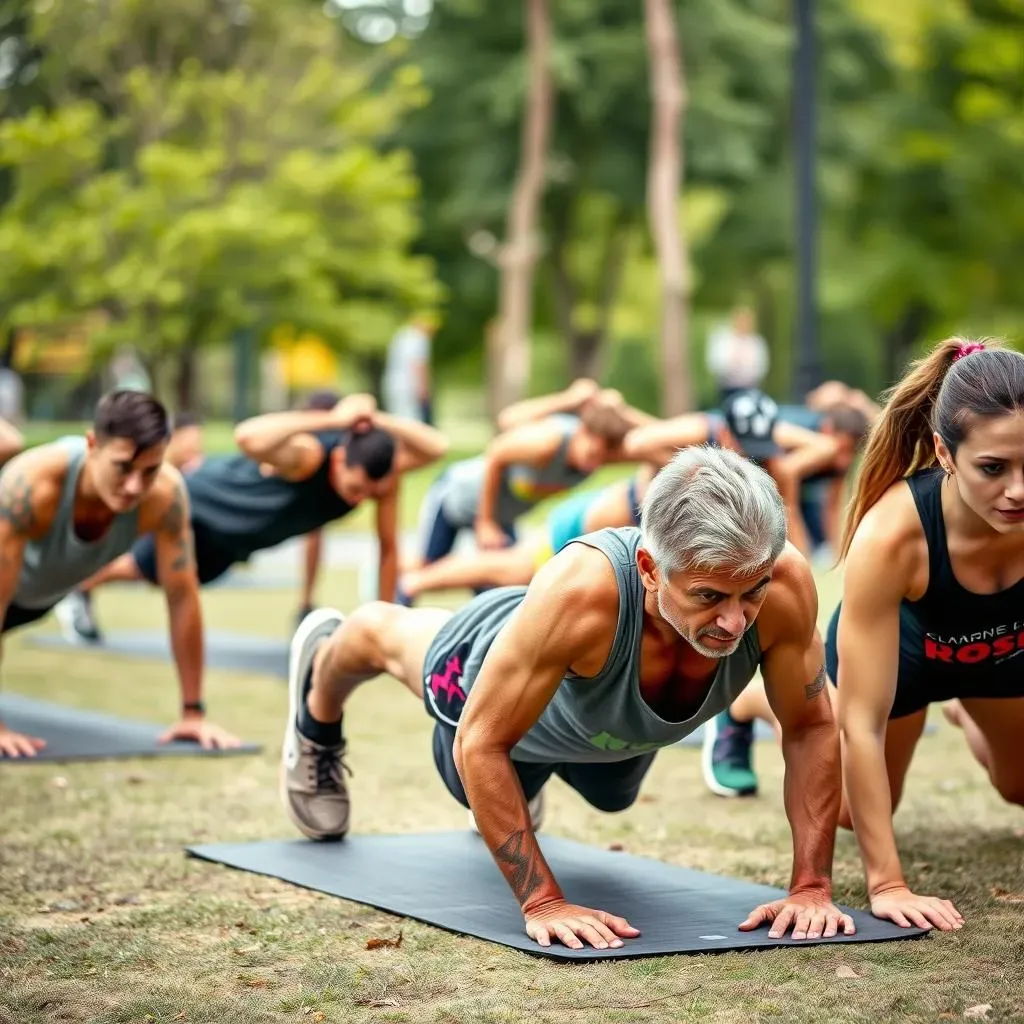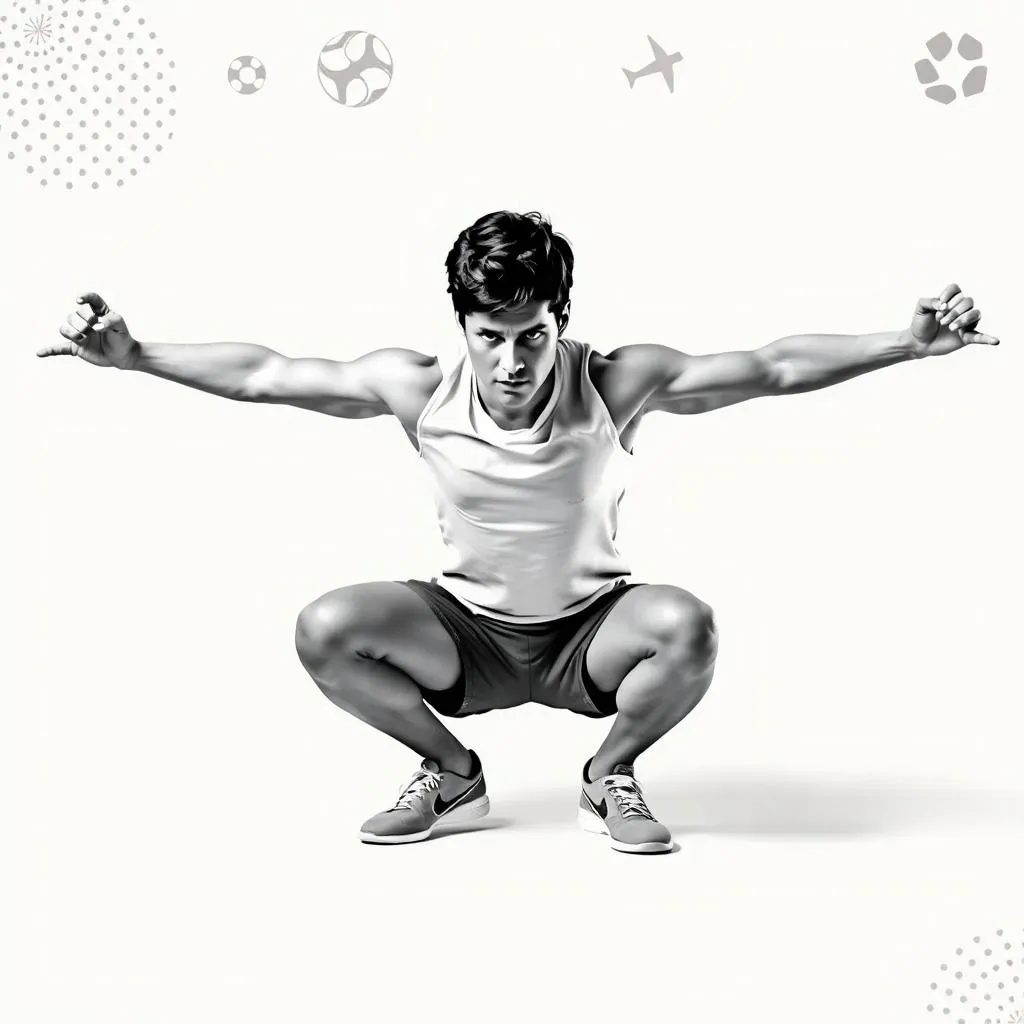Table of Contents
Welcome to the world of calisthenics, a form of exercise that has been a cornerstone of physical fitness for centuries. Calisthenics in English refers to a systematic approach to bodily exercises that promote strength, flexibility, and overall well-being, all without the need for specialized equipment. Originating from the Greek words "kalos" (beauty) and "sthenos" (strength), calisthenics has evolved over time to encompass a wide range of movements, from push-ups and squats to more complex routines. In this article, we will delve into the history of calisthenics, its linguistic roots, and provide a comprehensive guide to effective bodyweight exercises. Whether you're a fitness enthusiast or just starting your journey to physical fitness, this guide will equip you with the knowledge and motivation to unlock the full potential of calisthenics in English. So, let's embark on this journey to explore the power and benefits of calisthenics, and discover how it can transform your body and mind.
What is Calisthenics: Understanding the History and Benefits of Bodyweight Exercises

What is Calisthenics: Understanding the History and Benefits of Bodyweight Exercises
Introduction to Calisthenics
Calisthenics, derived from the Greek words "kalos" (beauty) and "sthenos" (strength), is a form of exercise that focuses on using body weight to build strength, flexibility, and coordination. This approach to fitness has been around for centuries, with its roots tracing back to ancient Greece. Calisthenics was initially practiced as a way to prepare for Olympic events, emphasizing the development of physical beauty and strength through movement.
Today, calisthenics is practiced worldwide, offering a holistic approach to fitness that doesn't require any specialized equipment. It's accessible to anyone, regardless of their fitness level, making it an ideal choice for those who prefer to work out at home, outdoors, or while traveling.
Benefits of Calisthenics
Engaging in calisthenics offers numerous benefits for the body and mind. One of the primary advantages is increased strength and flexibility. By using body weight as resistance, calisthenics helps build muscular endurance and boosts metabolism. Additionally, it improves balance, coordination, and overall physical fitness.
- Increased strength and flexibility
- Improved balance and coordination
- Enhanced cardiovascular health
- Weight management and improved metabolism
- Reduced risk of injury compared to weightlifting
Calisthenics also has mental health benefits, reducing stress and anxiety while improving mood and overall sense of well-being. The variety of exercises and the ability to progress at one's own pace make it a sustainable and enjoyable form of exercise.
History and Evolution of Calisthenics
The concept of calisthenics has evolved significantly since its inception. From ancient Greece to modern times, it has adapted to incorporate various exercises and training methods. The term "calisthenics" was first used in the 19th century, but the practice itself dates back much further.
Time Period | Evolution of Calisthenics |
|---|---|
Ancient Greece | Calisthenics originated as a form of exercise for Olympic athletes, emphasizing strength and beauty. |
19th Century | The term "calisthenics" was coined, and the practice became more formalized with structured exercises. |
20th Century | Calisthenics gained popularity worldwide, with the introduction of new exercises and training methodologies. |
Today, calisthenics continues to evolve, incorporating new exercises and techniques while maintaining its core principles of bodyweight training. Its accessibility and effectiveness have made it a staple in the fitness world, appealing to individuals of all ages and fitness levels.
Calisthenics in English: Exploring the Linguistic Roots and Evolution of the Term

Calisthenics in English: Exploring the Linguistic Roots and Evolution of the Term
Linguistic Roots of Calisthenics
The term "calisthenics" has its roots in ancient Greek. The word is derived from "kalos," meaning beauty, and "sthenos," meaning strength. In Greek, the word for calisthenics is "kalisthenics" (καλλισθενική), which refers to the practice of exercises that combine beauty and strength. This etymology reflects the original purpose of calisthenics: to develop not only physical strength but also grace and agility.
Over time, the term "calisthenics" has evolved, and its meaning has expanded to include a wide range of bodyweight exercises. Despite this evolution, the core principles of calisthenics remain the same—to promote physical fitness, flexibility, and overall well-being through systematic and rhythmic movements.
Language | Term for Calisthenics | Meaning |
|---|---|---|
Greek | καλλισθενική (kalistheniki) | Beauty and strength exercises |
English | Calisthenics | Systematic bodily exercises for fitness and vigor |
Evolution of the Term in English
The term "calisthenics" was first used in the English language in the 19th century. It was initially used to describe a system of exercises that combined elements of gymnastics, dance, and strength training. Over time, the definition of calisthenics has expanded to include various forms of bodyweight exercises, such as push-ups, squats, and lunges.
Today, calisthenics in English encompasses a broad range of exercises and training methods. It is widely recognized as a form of exercise that promotes physical fitness, improves mental health, and enhances overall quality of life. Whether practiced in a gym, at home, or outdoors, calisthenics remains a popular and accessible form of exercise for people of all ages and fitness levels.
- Improved physical fitness and strength
- Enhanced flexibility and coordination
- Reduced risk of injury compared to weightlifting
- Increased mental well-being and stress reduction
- Accessibility and convenience for all fitness levels
Effective Calisthenics Exercises for a FullBody Workout

Effective Calisthenics Exercises for a FullBody Workout
Introduction to Calisthenics Exercises
Calisthenics offers a wide range of exercises that can be tailored to suit different fitness levels and goals. From beginners to advanced practitioners, there's a calisthenics exercise for everyone. The key to an effective calisthenics workout is to focus on movements that engage multiple muscle groups at once, promoting overall strength, flexibility, and coordination.
One of the most significant advantages of calisthenics is its accessibility. All you need is your own body weight, making it possible to work out anywhere, anytime. Whether you're at home, in the park, or traveling, calisthenics provides the flexibility to maintain your fitness routine without relying on gym equipment.
Upper Body Exercises
Building a strong upper body is essential for overall fitness and can be achieved through various calisthenics exercises. Here are some of the most effective upper body exercises:
- Push-ups: Targets the chest, shoulders, and triceps.
- Dips (using a chair or bench): Works the triceps and anterior deltoids.
- Planks: Strengthens the core, shoulders, and back muscles.
- Arm circles: Improves shoulder mobility and strength.
Exercise | Muscle Groups Worked | Benefits |
|---|---|---|
Push-ups | Chest, shoulders, triceps | Improves overall upper body strength |
Dips | Triceps, anterior deltoids | Enhances arm strength and definition |
Planks | Core, shoulders, back | Boosts core strength and stability |
Arm circles | Shoulders | Increases shoulder mobility and reduces injury risk |
Lower Body Exercises
A strong lower body is crucial for balance, agility, and overall athletic performance. Calisthenics offers a variety of exercises to target the legs, glutes, and calves. Some effective lower body exercises include:
- Squats: Works the quadriceps, hamstrings, glutes, and core.
- Lunges: Targets the quadriceps, hamstrings, and glutes.
- Calf raises: Strengthens the calf muscles.
- Glute bridges: Tones the glutes and hamstrings.
Exercise | Muscle Groups Worked | Benefits |
|---|---|---|
Squats | Quadriceps, hamstrings, glutes, core | Improves leg strength and overall lower body fitness |
Lunges | Quadriceps, hamstrings, glutes | Enhances balance, agility, and athletic performance |
Calf raises | Calf muscles | Improves ankle strength and stability |
Glute bridges | Glutes, hamstrings | Tones the glutes and improves hip mobility |
Core Exercises
A strong core is essential for stability, balance, and overall athletic performance. Calisthenics core exercises include:
- Planks: Strengthens the core, shoulders, and back muscles.
- Russian twists: Targets the obliques.
- Leg raises: Works the lower abs.
- Bicycle crunches: Targets the entire core.
Exercise | Muscle Groups Worked | Benefits |
|---|---|---|
Planks | Core, shoulders, back | Improves core strength and posture |
Russian twists | Obliques | Enhances rotational strength and mobility |
Leg raises | Lower abs | Strengthens the lower abdominal muscles |
Bicycle crunches | Entire core | Improves overall core strength and endurance |
Maximizing Your Calisthenics Routine with Progressive Overload and Proper Form

Maximizing Your Calisthenics Routine with Progressive Overload and Proper Form
Progressive Overload: The Key to Continuous Improvement
One of the most effective ways to maximize your calisthenics routine is through progressive overload. This involves gradually increasing the difficulty of your workouts over time to challenge your muscles and promote continuous growth. Progressive overload can be achieved in several ways, such as increasing the number of repetitions, sets, or difficulty of exercises.
- Increase the number of repetitions: Gradually add more reps to your routine as you build strength and endurance.
- Boost the number of sets: Add more sets to your workout to increase overall volume and intensity.
- Modify exercise difficulty: Progress to more challenging exercises, such as diamond push-ups or single-leg squats, as you build strength and confidence.
Method | Benefits | Examples |
|---|---|---|
Increasing Repetitions | Improves muscular endurance | Adding 2-3 reps to each set each week |
Adding Sets | Increases overall workout intensity | Adding an extra set to each exercise |
Modifying Exercises | Challenges muscles from different angles | Switching from regular push-ups to diamond push-ups |
Proper Form: The Foundation of Effective Calisthenics
Maintaining proper form is essential for getting the most out of your calisthenics routine while minimizing the risk of injury. Proper form ensures that you're targeting the correct muscle groups and moving efficiently. Here are some tips for maintaining proper form:
- Engage your core: Activate your core muscles to stabilize your body and maintain control throughout each exercise.
- Use full range of motion: Move through the entire range of motion for each exercise to maximize muscle engagement.
- Breathe naturally: Avoid holding your breath and breathe naturally to maintain oxygen flow and prevent dizziness.
Tips for Proper Form | Benefits | Examples |
|---|---|---|
Engage Core | Improves stability and reduces injury risk | Drawing belly button towards spine during planks |
Full Range of Motion | Increases muscle engagement and flexibility | Lowering yourself fully during squats |
Natural Breathing | Maintains oxygen flow and prevents dizziness | Breathing in during the eccentric phase and out during the concentric phase |
Embracing the Power of Calisthenics
In conclusion, calisthenics in English represents a timeless and universal approach to fitness, bridging the gap between ancient traditions and modern lifestyles. By understanding the origins and evolution of calisthenics, and incorporating its exercises into our daily routines, we can achieve a stronger, more agile, and healthier body. As we've explored the various aspects of calisthenics, from its linguistic roots to practical workout tips, it's clear that this discipline offers something for everyone. Whether you're seeking to improve your physical prowess or simply looking for a sustainable way to stay active, calisthenics in English is an invaluable resource. So, embrace the journey, challenge yourself, and unlock the full potential of calisthenics to transform your life.
